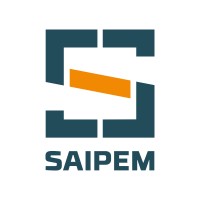
Saipem Company Cyber Security Posture
saipem.comSaipem is a global leader in the engineering and construction of major projects for the energy and infrastructure sectors, both offshore and onshore. Saipem is “One Company” organized into business lines: Asset Based Services, Drilling, Energy Carriers, Offshore Wind, Sustainable Infrastructures, Robotics & Industrialized Solutions. The company has 6 fabrication yards and an offshore fleet of 17 construction vessels owned and 15 drilling rigs, of which 9 owned. Always oriented towards technological innovation, the company’s purpose is “Engineering for a sustainable future”. As such Saipem is committed to supporting its clients on the energy transition pathway towards Net Zero, with increasingly digital means, technologies and processes geared for environmental sustainability. Listed on the Milan Stock Exchange, it is present in more than 50 countries around the world and employs about 30,000 people of over 120 nationalities.
Saipem Company Details
saipem
25391 employees
1897220.0
none
Engineering Services
saipem.com
Scan still pending
SAI_3062033
In-progress
Between 200 and 800
This score is AI-generated and less favored by cyber insurers, who prefer the TPRM score.
 Saipem Global Score
Saipem Global Score.png)

Saipem Company Scoring based on AI Models
| Model Name | Date | Description | Current Score Difference | Score |
|---|---|---|---|---|
| AVERAGE-Industry | 03-12-2025 | This score represents the average cybersecurity rating of companies already scanned within the same industry. It provides a benchmark to compare an individual company's security posture against its industry peers. | N/A | Between 200 and 800 |
Saipem Company Cyber Security News & History
| Entity | Type | Severity | Impact | Seen | Url ID | Details | View |
|---|
Saipem Company Subsidiaries

Saipem is a global leader in the engineering and construction of major projects for the energy and infrastructure sectors, both offshore and onshore. Saipem is “One Company” organized into business lines: Asset Based Services, Drilling, Energy Carriers, Offshore Wind, Sustainable Infrastructures, Robotics & Industrialized Solutions. The company has 6 fabrication yards and an offshore fleet of 17 construction vessels owned and 15 drilling rigs, of which 9 owned. Always oriented towards technological innovation, the company’s purpose is “Engineering for a sustainable future”. As such Saipem is committed to supporting its clients on the energy transition pathway towards Net Zero, with increasingly digital means, technologies and processes geared for environmental sustainability. Listed on the Milan Stock Exchange, it is present in more than 50 countries around the world and employs about 30,000 people of over 120 nationalities.
Access Data Using Our API

Get company history
.png)
Saipem Cyber Security News
TotalEnergies' Suriname project kicks off with $3 bln in contract awards
French oil major TotalEnergies has awarded engineering contracts worth at least $3 billion as part of its fast-track development of ...
TotalEnergies Awards GranMorgu Contracts to Saipem, TechnipFMC
TechnipFMC said the project combines its subsea architecture expertise with Saipem's EPCI solutions and pipelay capabilities to accelerate time ...
News Content Hub - Saipem, Divento propose novel STAR 1 technology for Italian floating wind projects
Floating offshore wind can play an important role for the production of renewable energy and in Italian industry. We await clarification of the Contract for ...
New Shamoon Malware Variant Targets Italian Oil and Gas Company
Shamoon is back... one of the most destructive malware families that caused damage to Saudi Arabia's largest oil producer in 2012.
Aker Solutions Provides Update on Cyber Attack
Aker Solutions Provides Update on Cyber Attack · Saipem revealed that it had been the victim of a cyber-attack · hit servers based in the Middle ...
Saipem says Shamoon variant crippled hundreds of computers
Shamoon disables computers by overwriting a file known as the master boot record, making it impossible for devices to start up. Former U.S. ...
Shamoon resurfaces, targeting Italian oil company
The Shamoon virus known for the destructive 2012 attack on Saudi Aramco appears to have hit Italian oil and gas company Saipem.
‘Disruptive’ virus that hit energy companies resurfaces
The Shamoon worm has a sordid history of hitting oil and gas companies in Saudi Arabia and Qatar, among other Middle Eastern targets. Experts ...
TCS Selected by Engineering Leader Saipem to Digitally Transform its Business
TCS will be supporting Saipem's digital transformation as the company faces a constantly evolving and increasingly competitive market.

Saipem Similar Companies
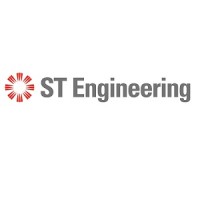
ST Engineering
At ST Engineering, we apply our technology and innovation to solve real-world problems and improve lives. Our commitment to excellence and our track record as a global technology, defence, and engineering company earns us a reputation for quality and trust. Subscribe to get the latest news de
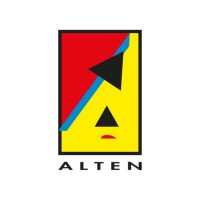
ALTEN
𝐀 𝐰𝐨𝐫𝐥𝐝 𝐥𝐞𝐚𝐝𝐞𝐫 𝐢𝐧 𝐄𝐧𝐠𝐢𝐧𝐞𝐞𝐫𝐢𝐧𝐠 𝐚𝐧𝐝 𝐈𝐓 𝐒𝐞𝐫𝐯𝐢𝐜𝐞𝐬 ALTEN is committed to meeting the expectations of its stakeholders and anticipating their requirements in the fields of innovation, R&D, and technological information systems. Founded in 1988 and present in 30+ countries, the Group has established its
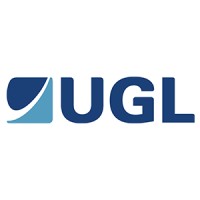
UGL
UGL is CIMIC Group's specialist end-to-end engineering, services and operations provider. We have a rich history dating back to 1899 and since then we have grown to be a market leader in many of the sectors in which we operate. Working with some of the most important companies and governments in Au
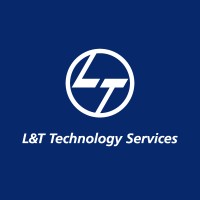
L&T Technology Services
L&T Technology Services (LTTS) is one of the world’s leading engineering and technology service providers. With operations in over 25 countries and a growing annual revenue that now surpasses USD 1.2 billion, we work with organizations who design, develop or deliver products and services. We help
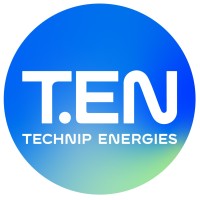
Technip Energies
Technip Energies is a global technology and engineering powerhouse. With leadership positions in LNG, hydrogen, ethylene, sustainable chemistry, and CO2 management, we are contributing to the development of critical markets such as energy, energy derivatives, decarbonization, and circularity. Our
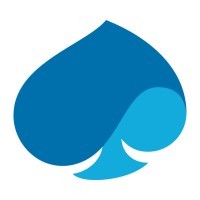
Capgemini Engineering
World leader in engineering and R&D services, Capgemini Engineering combines its broad industry knowledge and cutting-edge technologies in digital and software to support the convergence of the physical and digital worlds. Coupled with the capabilities of the rest of the Group, it helps clients to a

Frequently Asked Questions (FAQ) on Cybersecurity Incidents
Saipem CyberSecurity History Information
Total Incidents: According to Rankiteo, Saipem has faced 0 incidents in the past.
Incident Types: As of the current reporting period, Saipem has not encountered any cybersecurity incidents.
Total Financial Loss: The total financial loss from these incidents is estimated to be {total_financial_loss}.
Cybersecurity Posture: The company's overall cybersecurity posture is described as Saipem is a global leader in the engineering and construction of major projects for the energy and infrastructure sectors, both offshore and onshore. Saipem is “One Company” organized into business lines: Asset Based Services, Drilling, Energy Carriers, Offshore Wind, Sustainable Infrastructures, Robotics & Industrialized Solutions. The company has 6 fabrication yards and an offshore fleet of 17 construction vessels owned and 15 drilling rigs, of which 9 owned. Always oriented towards technological innovation, the company’s purpose is “Engineering for a sustainable future”. As such Saipem is committed to supporting its clients on the energy transition pathway towards Net Zero, with increasingly digital means, technologies and processes geared for environmental sustainability. Listed on the Milan Stock Exchange, it is present in more than 50 countries around the world and employs about 30,000 people of over 120 nationalities..
Detection and Response: The company detects and responds to cybersecurity incidents through {description_of_detection_and_response_process}.
Incident Details
Incident 1: Ransomware Attack
Title: {Incident_Title}
Description: {Brief_description_of_the_incident}
Date Detected: {Detection_Date}
Date Publicly Disclosed: {Disclosure_Date}
Date Resolved: {Resolution_Date}
Type: {Type_of_Attack}
Attack Vector: {Attack_Vector}
Vulnerability Exploited: {Vulnerability}
Threat Actor: {Threat_Actor}
Motivation: {Motivation}
Incident 2: Data Breach
Title: {Incident_Title}
Description: {Brief_description_of_the_incident}
Date Detected: {Detection_Date}
Date Publicly Disclosed: {Disclosure_Date}
Date Resolved: {Resolution_Date}
Type: {Type_of_Attack}
Attack Vector: {Attack_Vector}
Vulnerability Exploited: {Vulnerability}
Threat Actor: {Threat_Actor}
Motivation: {Motivation}
Common Attack Types: As of now, the company has not encountered any reported incidents involving common cyberattacks.
Identification of Attack Vectors: The company identifies the attack vectors used in incidents through {description_of_identification_process}.
Impact of the Incidents
Incident 1: Ransomware Attack
Financial Loss: {Financial_Loss}
Data Compromised: {Data_Compromised}
Systems Affected: {Systems_Affected}
Downtime: {Downtime}
Operational Impact: {Operational_Impact}
Conversion Rate Impact: {Conversion_Rate_Impact}
Revenue Loss: {Revenue_Loss}
Customer Complaints: {Customer_Complaints}
Brand Reputation Impact: {Brand_Reputation_Impact}
Legal Liabilities: {Legal_Liabilities}
Identity Theft Risk: {Identity_Theft_Risk}
Payment Information Risk: {Payment_Information_Risk}
Incident 2: Data Breach
Financial Loss: {Financial_Loss}
Data Compromised: {Data_Compromised}
Systems Affected: {Systems_Affected}
Downtime: {Downtime}
Operational Impact: {Operational_Impact}
Conversion Rate Impact: {Conversion_Rate_Impact}
Revenue Loss: {Revenue_Loss}
Customer Complaints: {Customer_Complaints}
Brand Reputation Impact: {Brand_Reputation_Impact}
Legal Liabilities: {Legal_Liabilities}
Identity Theft Risk: {Identity_Theft_Risk}
Payment Information Risk: {Payment_Information_Risk}
Average Financial Loss: The average financial loss per incident is {average_financial_loss}.
Commonly Compromised Data Types: The types of data most commonly compromised in incidents are {list_of_commonly_compromised_data_types}.
Incident 1: Ransomware Attack
Entity Name: {Entity_Name}
Entity Type: {Entity_Type}
Industry: {Industry}
Location: {Location}
Size: {Size}
Customers Affected: {Customers_Affected}
Incident 2: Data Breach
Entity Name: {Entity_Name}
Entity Type: {Entity_Type}
Industry: {Industry}
Location: {Location}
Size: {Size}
Customers Affected: {Customers_Affected}
Response to the Incidents
Incident 1: Ransomware Attack
Incident Response Plan Activated: {Yes/No}
Third Party Assistance: {Yes/No}
Law Enforcement Notified: {Yes/No}
Containment Measures: {Containment_Measures}
Remediation Measures: {Remediation_Measures}
Recovery Measures: {Recovery_Measures}
Communication Strategy: {Communication_Strategy}
Adaptive Behavioral WAF: {Adaptive_Behavioral_WAF}
On-Demand Scrubbing Services: {On_Demand_Scrubbing_Services}
Network Segmentation: {Network_Segmentation}
Enhanced Monitoring: {Enhanced_Monitoring}
Incident 2: Data Breach
Incident Response Plan Activated: {Yes/No}
Third Party Assistance: {Yes/No}
Law Enforcement Notified: {Yes/No}
Containment Measures: {Containment_Measures}
Remediation Measures: {Remediation_Measures}
Recovery Measures: {Recovery_Measures}
Communication Strategy: {Communication_Strategy}
Adaptive Behavioral WAF: {Adaptive_Behavioral_WAF}
On-Demand Scrubbing Services: {On_Demand_Scrubbing_Services}
Network Segmentation: {Network_Segmentation}
Enhanced Monitoring: {Enhanced_Monitoring}
Incident Response Plan: The company's incident response plan is described as {description_of_incident_response_plan}.
Third-Party Assistance: The company involves third-party assistance in incident response through {description_of_third_party_involvement}.
Data Breach Information
Incident 2: Data Breach
Type of Data Compromised: {Type_of_Data}
Number of Records Exposed: {Number_of_Records}
Sensitivity of Data: {Sensitivity_of_Data}
Data Exfiltration: {Yes/No}
Data Encryption: {Yes/No}
File Types Exposed: {File_Types}
Personally Identifiable Information: {Yes/No}
Prevention of Data Exfiltration: The company takes the following measures to prevent data exfiltration: {description_of_prevention_measures}.
Handling of PII Incidents: The company handles incidents involving personally identifiable information (PII) through {description_of_handling_process}.
Ransomware Information
Incident 1: Ransomware Attack
Ransom Demanded: {Ransom_Amount}
Ransom Paid: {Ransom_Paid}
Ransomware Strain: {Ransomware_Strain}
Data Encryption: {Yes/No}
Data Exfiltration: {Yes/No}
Ransom Payment Policy: The company's policy on paying ransoms in ransomware incidents is described as {description_of_ransom_payment_policy}.
Data Recovery from Ransomware: The company recovers data encrypted by ransomware through {description_of_data_recovery_process}.
Regulatory Compliance
Incident 1: Ransomware Attack
Regulations Violated: {Regulations_Violated}
Fines Imposed: {Fines_Imposed}
Legal Actions: {Legal_Actions}
Regulatory Notifications: {Regulatory_Notifications}
Incident 2: Data Breach
Regulations Violated: {Regulations_Violated}
Fines Imposed: {Fines_Imposed}
Legal Actions: {Legal_Actions}
Regulatory Notifications: {Regulatory_Notifications}
Regulatory Frameworks: The company complies with the following regulatory frameworks regarding cybersecurity: {list_of_regulatory_frameworks}.
Ensuring Regulatory Compliance: The company ensures compliance with regulatory requirements through {description_of_compliance_measures}.
Lessons Learned and Recommendations
Incident 1: Ransomware Attack
Lessons Learned: {Lessons_Learned}
Incident 2: Data Breach
Lessons Learned: {Lessons_Learned}
Incident 1: Ransomware Attack
Recommendations: {Recommendations}
Incident 2: Data Breach
Recommendations: {Recommendations}
Key Lessons Learned: The key lessons learned from past incidents are {list_of_key_lessons_learned}.
Implemented Recommendations: The company has implemented the following recommendations to improve cybersecurity: {list_of_implemented_recommendations}.
References
Additional Resources: Stakeholders can find additional resources on cybersecurity best practices at {list_of_additional_resources}.
Investigation Status
Incident 1: Ransomware Attack
Investigation Status: {Investigation_Status}
Incident 2: Data Breach
Investigation Status: {Investigation_Status}
Communication of Investigation Status: The company communicates the status of incident investigations to stakeholders through {description_of_communication_process}.
Stakeholder and Customer Advisories
Incident 1: Ransomware Attack
Stakeholder Advisories: {Stakeholder_Advisories}
Customer Advisories: {Customer_Advisories}
Incident 2: Data Breach
Stakeholder Advisories: {Stakeholder_Advisories}
Customer Advisories: {Customer_Advisories}
Advisories Provided: The company provides the following advisories to stakeholders and customers following an incident: {description_of_advisories_provided}.
Initial Access Broker
Incident 1: Ransomware Attack
Entry Point: {Entry_Point}
Reconnaissance Period: {Reconnaissance_Period}
Backdoors Established: {Backdoors_Established}
High Value Targets: {High_Value_Targets}
Data Sold on Dark Web: {Yes/No}
Incident 2: Data Breach
Entry Point: {Entry_Point}
Reconnaissance Period: {Reconnaissance_Period}
Backdoors Established: {Backdoors_Established}
High Value Targets: {High_Value_Targets}
Data Sold on Dark Web: {Yes/No}
Monitoring and Mitigation of Initial Access Brokers: The company monitors and mitigates the activities of initial access brokers through {description_of_monitoring_and_mitigation_measures}.
Post-Incident Analysis
Incident 1: Ransomware Attack
Root Causes: {Root_Causes}
Corrective Actions: {Corrective_Actions}
Incident 2: Data Breach
Root Causes: {Root_Causes}
Corrective Actions: {Corrective_Actions}
Post-Incident Analysis Process: The company's process for conducting post-incident analysis is described as {description_of_post_incident_analysis_process}.
Corrective Actions Taken: The company has taken the following corrective actions based on post-incident analysis: {list_of_corrective_actions_taken}.
Additional Questions
General Information
Ransom Payment History: The company has {paid/not_paid} ransoms in the past.
Last Ransom Demanded: The amount of the last ransom demanded was {last_ransom_amount}.
Last Attacking Group: The attacking group in the last incident was {last_attacking_group}.
Incident Details
Most Recent Incident Detected: The most recent incident detected was on {most_recent_incident_detected_date}.
Most Recent Incident Publicly Disclosed: The most recent incident publicly disclosed was on {most_recent_incident_publicly_disclosed_date}.
Most Recent Incident Resolved: The most recent incident resolved was on {most_recent_incident_resolved_date}.
Impact of the Incidents
Highest Financial Loss: The highest financial loss from an incident was {highest_financial_loss}.
Most Significant Data Compromised: The most significant data compromised in an incident was {most_significant_data_compromised}.
Most Significant System Affected: The most significant system affected in an incident was {most_significant_system_affected}.
Response to the Incidents
Third-Party Assistance in Most Recent Incident: The third-party assistance involved in the most recent incident was {third_party_assistance_in_most_recent_incident}.
Containment Measures in Most Recent Incident: The containment measures taken in the most recent incident were {containment_measures_in_most_recent_incident}.
Data Breach Information
Most Sensitive Data Compromised: The most sensitive data compromised in a breach was {most_sensitive_data_compromised}.
Number of Records Exposed: The number of records exposed in the most significant breach was {number_of_records_exposed}.
Ransomware Information
Highest Ransom Demanded: The highest ransom demanded in a ransomware incident was {highest_ransom_demanded}.
Highest Ransom Paid: The highest ransom paid in a ransomware incident was {highest_ransom_paid}.
Regulatory Compliance
Highest Fine Imposed: The highest fine imposed for a regulatory violation was {highest_fine_imposed}.
Most Significant Legal Action: The most significant legal action taken for a regulatory violation was {most_significant_legal_action}.
Lessons Learned and Recommendations
Most Significant Lesson Learned: The most significant lesson learned from past incidents was {most_significant_lesson_learned}.
Most Significant Recommendation Implemented: The most significant recommendation implemented to improve cybersecurity was {most_significant_recommendation_implemented}.
References
Most Recent Source: The most recent source of information about an incident is {most_recent_source}.
Most Recent URL for Additional Resources: The most recent URL for additional resources on cybersecurity best practices is {most_recent_url}.
Investigation Status
Current Status of Most Recent Investigation: The current status of the most recent investigation is {current_status_of_most_recent_investigation}.
Stakeholder and Customer Advisories
Most Recent Stakeholder Advisory: The most recent stakeholder advisory issued was {most_recent_stakeholder_advisory}.
Most Recent Customer Advisory: The most recent customer advisory issued was {most_recent_customer_advisory}.
Initial Access Broker
Most Recent Entry Point: The most recent entry point used by an initial access broker was {most_recent_entry_point}.
Most Recent Reconnaissance Period: The most recent reconnaissance period for an incident was {most_recent_reconnaissance_period}.
Post-Incident Analysis
Most Significant Root Cause: The most significant root cause identified in post-incident analysis was {most_significant_root_cause}.
Most Significant Corrective Action: The most significant corrective action taken based on post-incident analysis was {most_significant_corrective_action}.
What Do We Measure?
















Every week, Rankiteo analyzes billions of signals to give organizations a sharper, faster view of emerging risks. With deeper, more actionable intelligence at their fingertips, security teams can outpace threat actors, respond instantly to Zero-Day attacks, and dramatically shrink their risk exposure window.
These are some of the factors we use to calculate the overall score:
Identify exposed access points, detect misconfigured SSL certificates, and uncover vulnerabilities across the network infrastructure.
Gain visibility into the software components used within an organization to detect vulnerabilities, manage risk, and ensure supply chain security.
Monitor and manage all IT assets and their configurations to ensure accurate, real-time visibility across the company's technology environment.
Leverage real-time insights on active threats, malware campaigns, and emerging vulnerabilities to proactively defend against evolving cyberattacks.




